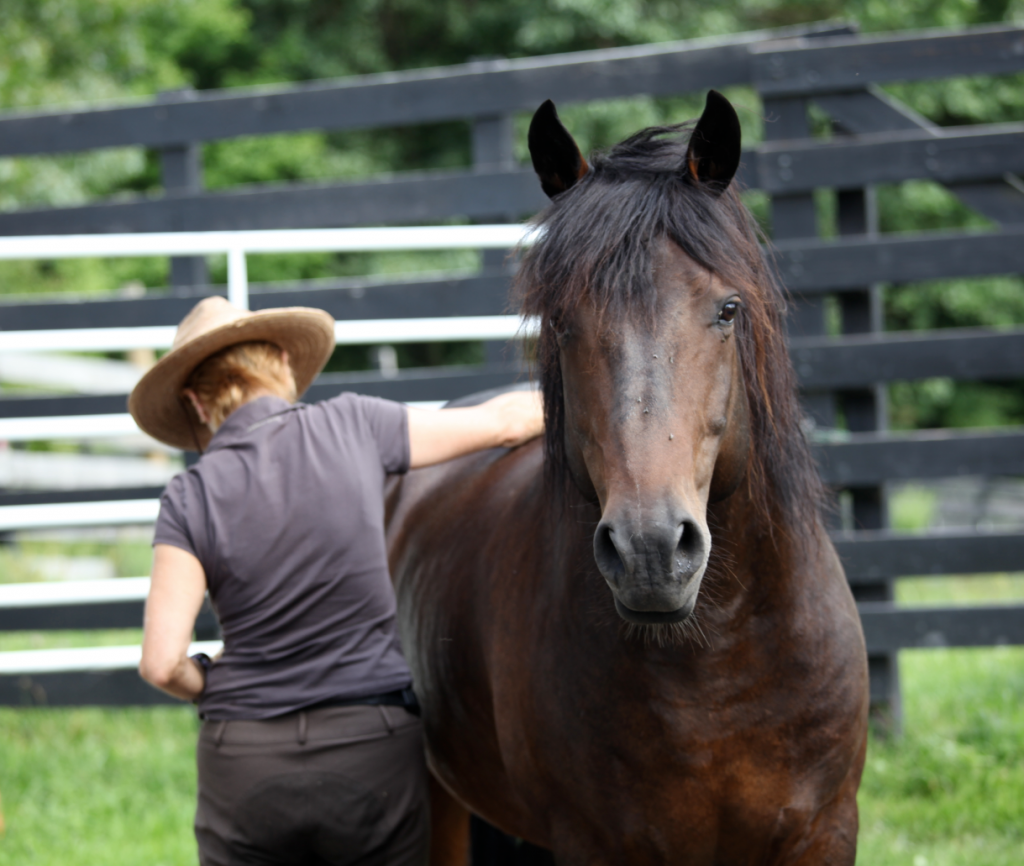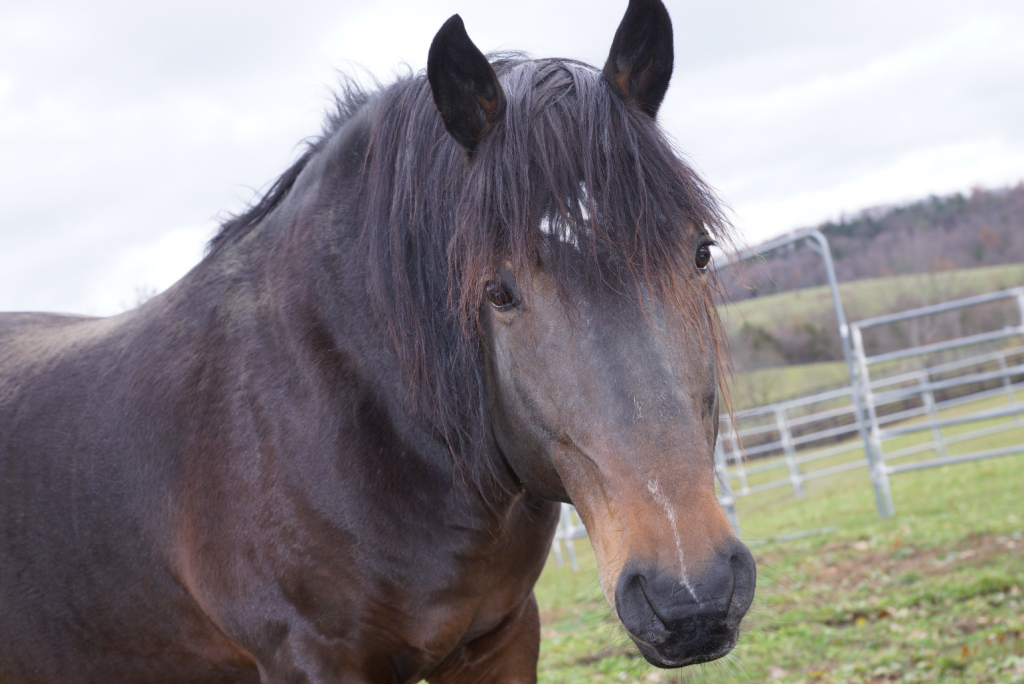I went to see Nelson, and toward the end of our time together, my friend came down to say hello. As she and I stood outside his paddock, he hung out with us, nuzzling the fence, poking his nose through – participating in our conversation.
Nelson is a lonely stallion. He does not get to hang out with a herd. In captivity, we usually isolate stallions because they can hurt each other. We don’t want them to work out their territorial, sexual stuff on our watch. So for the time being, we humans are his herd.
I have been thinking about why I am so much more comfortable with an equine herd or a dog pack than I am with most human herds. Maybe it is because I feel so clearly the lack of agenda or concealed intent with the horses and dogs. Maybe it is that as a dancer, movement and touch are my first language, and that is where the horses live. Language is not weaponized, and the communication feels more honest.
It is not always simple. I sometimes have to spend a lot of time parsing what my Andalusian gelding Amadeo is saying. He is a flighty boy, and like some humans, his language (a hoof, his teeth) sometimes fly out before he has really thought things through. Nelson is more straightforward, more willing to tell it like it is.
I am also thinking about what is essential to me in a day. What I come up with first is four legs and a soft nose.
What about you?


